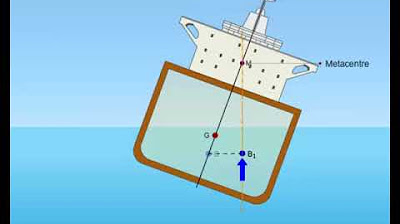Why Some People Are Better Built For Squatting
Summary
TLDRThe video script delves into why certain body types may excel at squatting due to factors like bone length ratios and center of gravity. It emphasizes the importance of squatting for overall strength and functionality, offering modifications and exercises like seated good mornings to improve adductor Magnus flexibility and ankle mobility. The script also addresses common issues like the 'buttwink' and provides tips to maintain proper spinal alignment during deep squats, ensuring that everyone can benefit from this fundamental exercise.
Takeaways
- 🏋️ Squatting is a versatile exercise beneficial for strength, sports performance, and maintaining functionality as we age, suitable for nearly everyone with various modifications available.
- 🧍♂️ The ability to squat effectively is often influenced by an individual's body structure, particularly the length of the femur and the center of gravity during the squat.
- 🦿 The length of the femur affects the degree of hip hinging required to maintain balance during a squat, with a longer femur necessitating more hinging and a shorter femur allowing a more upright posture.
- 🔄 Dorsal flexion at the ankle is important for squat depth, and variations in this joint's flexibility can impact the squat posture and depth an individual can achieve.
- 🏋️♀️ The muscles involved in squatting, such as the hamstrings, gluteus maximus, and adductor magnus, must have adequate length and strength to maintain proper form and avoid injury.
- 🚫 The 'butt wink' or posterior pelvic tilt is a common issue when squatting too deep without proper muscle length and can be mitigated with proper form and mobility exercises.
- 💊 Maximus' testosterone protocol, sponsored in the video, is highlighted as a potential solution for those struggling to build muscle, by naturally increasing testosterone levels under medical supervision.
- 🤸♂️ Exercises like the seated good morning can help strengthen and increase the range of motion in the adductor magnus, which is often the limiting factor in deep squats.
- 👣 Elevating the heels during a squat can help maintain an upright torso and deeper squat depth, by reducing the flexion required at the hip.
- 🛑 Wider stance and slight external hip rotation can alleviate tissue approximation issues, allowing for deeper squats without compromising spinal alignment.
- 🔄 Improving hip and ankle mobility are long-term solutions to increase squat range of motion and depth, which can translate to better squat form and performance.
- 🌟 Regardless of bone length, individuals can achieve effective squats with proper training, mobility work, and adherence to correct form and technique.
Q & A
Why might some people be better built for squatting than others?
-Some people may be better built for squatting due to their body's center of gravity and the length of their femur compared to their tibia, which affects how much they need to hinge at the hips to maintain balance during a squat.
What is the importance of maintaining the center of gravity while squatting?
-Maintaining the center of gravity is crucial to avoid falling over and to ensure proper form and balance throughout the squat movement.
How does the length of the femur affect squatting posture?
-A longer femur requires more hinging at the hips and a more forward-leaning torso to maintain the center of gravity, while a shorter femur allows for a more upright posture during a squat.
What muscles are primarily responsible for maintaining spinal position during a squat?
-The extensor muscles of the spine, along with the hip muscles such as the hamstrings, glutes, and adductor Magnus, are responsible for maintaining proper spinal position during a squat.
What is the term for when the top of the foot comes closer to the shin bone during squatting?
-This is called dorsal flexion, which occurs at the ankle joint in the bottom position of a squat.
Why is the adductor Magnus muscle important in the context of squatting?
-The adductor Magnus is important because it actively lengthens during the squat's lowering phase, and its attachment to the pelvis can affect the pelvis's position and potentially cause a posterior pelvic tilt if it reaches its length limit.
What is the term used to describe the pelvis tilting underneath the body during a deep squat?
-This is often referred to as a posterior pelvic tilt or colloquially as 'buttwink.'
What immediate adjustments can be made to improve squat depth while maintaining proper alignment?
-Slightly widening the stance, externally rotating the hips, and elevating the heels can immediately help improve squat depth without compromising spinal alignment.
How can one work on long-term modifications to improve squat range of motion?
-Long-term modifications include improving hip mobility, specifically targeting the adductor Magnus muscle, and working on ankle mobility with calf muscles.
What is the role of the Maximus supplement mentioned in the script?
-Maximus offers a testosterone protocol that includes encline and pregnanolone to stimulate natural testosterone production and support hormonal health, potentially aiding in muscle growth and strength gains.
What is the significance of full range of motion squats for strength and hypertrophy gains?
-Full range of motion squats are more effective for stimulating strength and hypertrophy gains, and they also help maintain mobility, which is beneficial for overall functionality and longevity.
Outlines

This section is available to paid users only. Please upgrade to access this part.
Upgrade NowMindmap

This section is available to paid users only. Please upgrade to access this part.
Upgrade NowKeywords

This section is available to paid users only. Please upgrade to access this part.
Upgrade NowHighlights

This section is available to paid users only. Please upgrade to access this part.
Upgrade NowTranscripts

This section is available to paid users only. Please upgrade to access this part.
Upgrade Now5.0 / 5 (0 votes)





